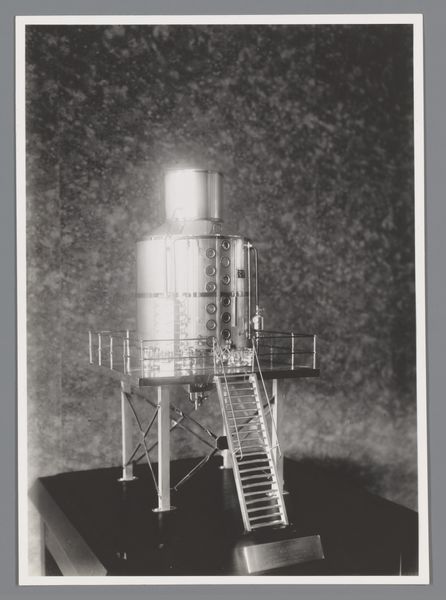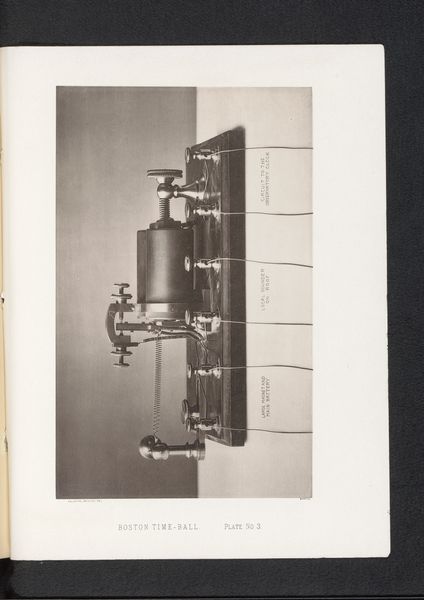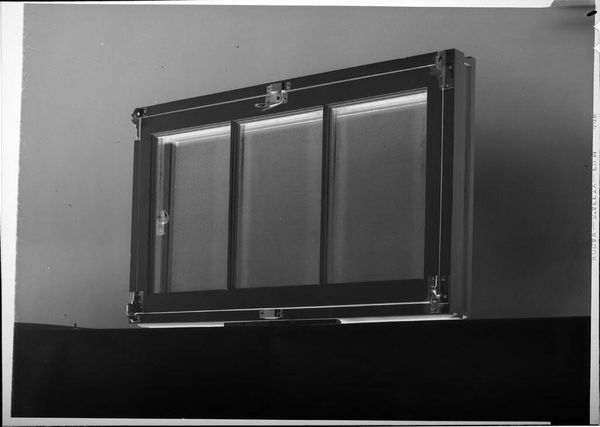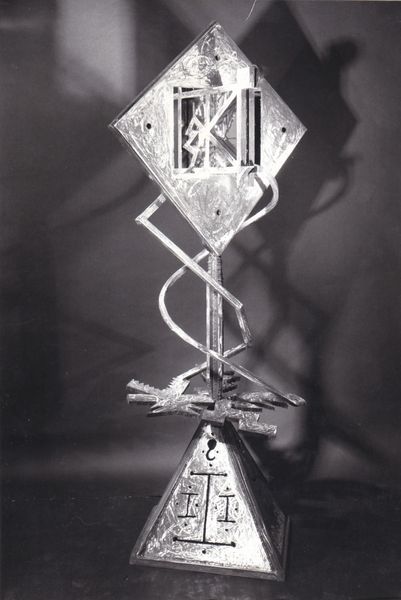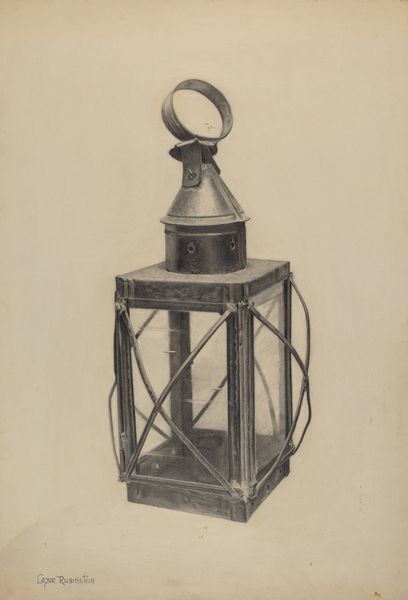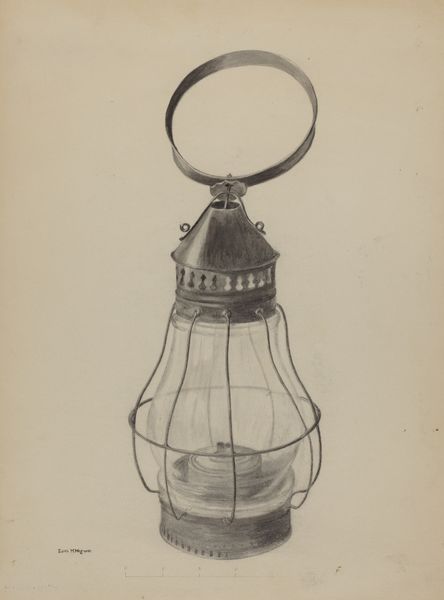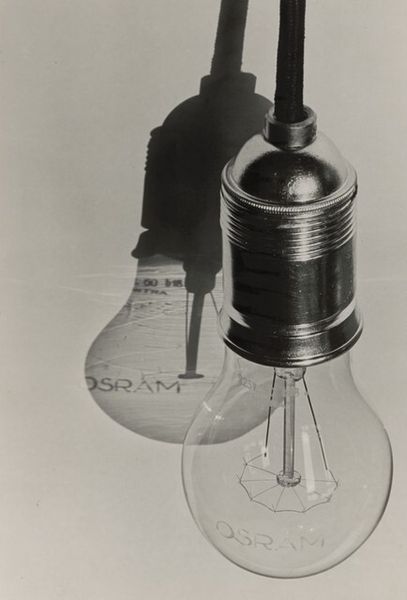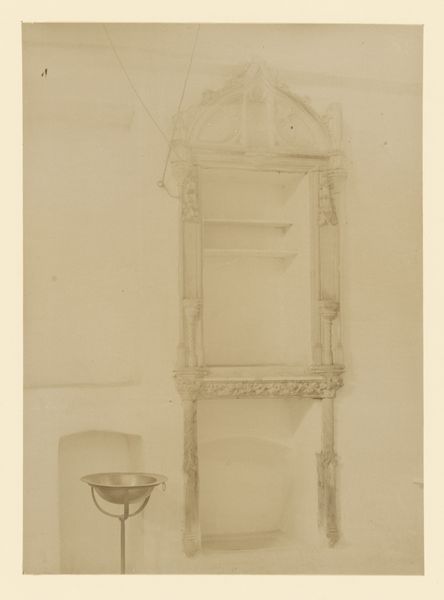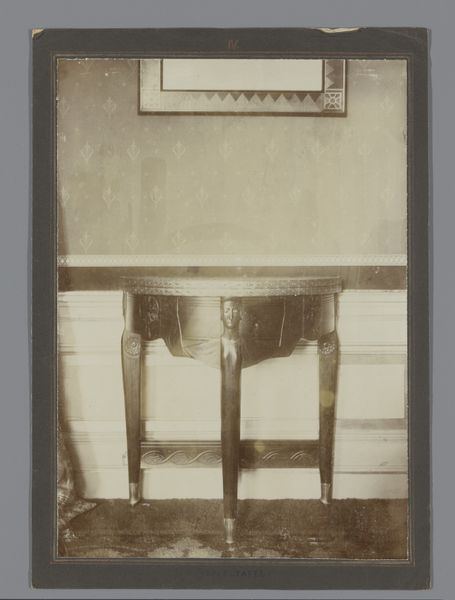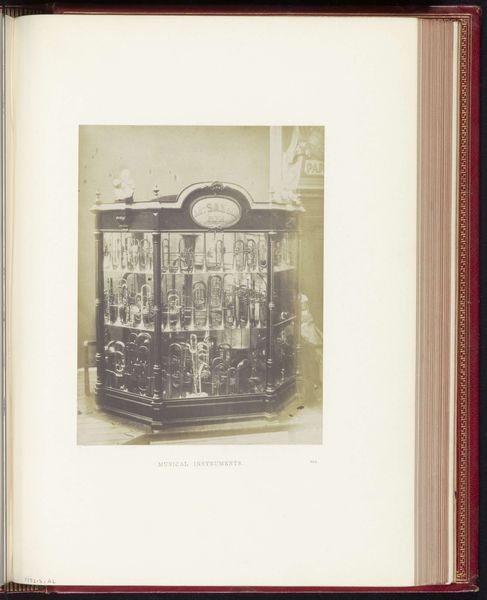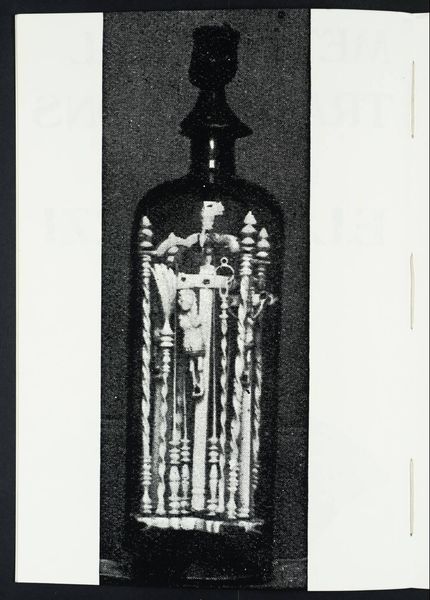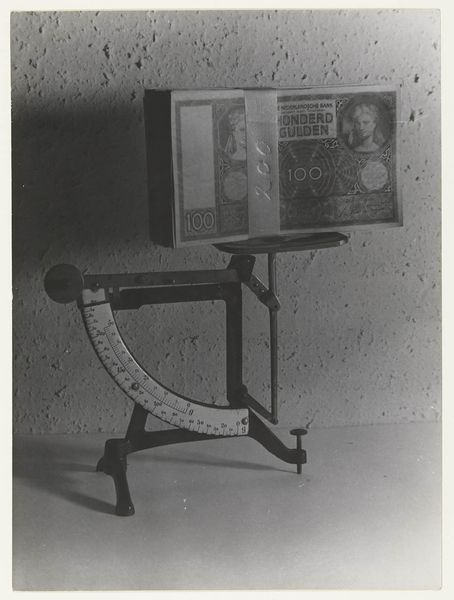
Dimensions: height 180 mm, width 130 mm
Copyright: Rijks Museum: Open Domain
Curator: Welcome. We are looking at a photograph, an assemblage of photography and print. The piece is titled, "Scale Model of a Cooking Pot", and it's dated between 1917 and 1938. It's part of the Rijksmuseum collection. Editor: My first impression? It’s strangely captivating. The composition is so stark, the high contrast against the elaborate wallpaper makes this industrial-looking model in its display case feel oddly precious. It evokes a sense of preservation, almost like a scientific specimen. Curator: Absolutely, and consider the timing. The image dates from a period of immense social upheaval following the First World War, as well as the Interwar, and before WWII broke out. What does it mean to create, to archive, an image of domestic technology during these pivotal times? Editor: That’s fascinating. Thinking about that context, perhaps the 'cooking pot' becomes more than just a household item. It might be a symbol of stability, of nourishment, in a world grappling with scarcity and uncertainty. The display case could then be seen as a commentary on the fragile nature of domestic life, a reminder of how easily basic necessities can be disrupted by broader political and economic forces. Curator: Precisely. The photographic medium also comes into play, reflecting mass media and production, giving authority to even quotidian, "feminine" object by showcasing this thing like something important or noteworthy. Also, don't forget how museums decide what and how to archive historical documents and artworks—institutions have played an active role in promoting political and cultural powers through material selection and classification. Editor: And to further that point about feminine objects and the period, the idea of domestic labor becoming a sort of…monumental endeavor. In a patriarchal society that devalues domestic tasks, to memorialize a kitchen implement elevates the contributions of women. The choice of scale also plays into this; making small the large cooking devices that have a very important social function—a quiet resistance against gender inequality. Curator: A powerful and insightful reading. The object’s ordinariness is charged through this photographic display of preservation. What final thoughts do you have? Editor: I'm left wondering who chose this, and what conversation were they trying to elicit then that remains resonant even today about the relationship between our interior lives and external realities. Curator: Indeed. The history of technology presented here compels us to reconsider how history is constructed. A seemingly innocuous photo contains many political threads, if only one starts to pull.
Comments
No comments
Be the first to comment and join the conversation on the ultimate creative platform.
